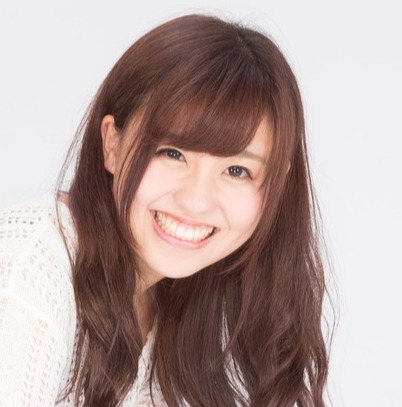“miman” vs. “ika“:Perfect Guide For You to Use Them
What is the difference between “未満(miman) and 以下(ika)”? Which is a more natural Japanese? After reading this, you would be answering this question. Let me introduce what their subtle differences are and how you correctly use them such as native speakers today!
A未満 (miman)
Less than A, Below A, Under A / 不到 / 미만 / chưa đủ…
“A未満 (miman)” means “Less than A, Below A Or Under A” and which has been used as the meaning of “a smaller number or amount than A”. The basic way to use it is “A未満(Less than A / Below A)”, etc. For instance, “1年未満(less than 1 year)”, “2時間未満(less than 2 hours)”, “30日未満(less than 30 days)”, etc. The tips for using it are that “A未満” DOES NOT INCLUDE A. Everybody could use “未満” in daily conversations as casual and in business situations as formal such as “1年未満だよ。(It’s less than 1 year.)” as casual and “1年未満です。(It’s less than 1 year.)” as formal and which is used as polite. Lastly, “2時間未満(less than 2 hours)” means “1.5, 1, 0.5 … hours”, “30日未満(less than 30 days)” means “29, 28, 27, 26 …. days”, etc.
\ Learn Japanese with a personal native teacher!/
Sample
目的地は現在地から2キロ未満です。 (The destination is less than 2 kilometers of where we are.) (目的地距离当前的位置不到2公里。) (목적지는 현 위치로부터 2킬로미터 미만입니다.) (Điểm đến cách vị trí hiện tại của bạn chưa tới 2 km.) (mokutekichi wa genzaichi kara ni kiro miman desu.)


3歳未満の子供は無料だよ。 (It’s free for children under the age of 3.) (3岁以下的儿童免费。) (3세 미만의 어린이는 무료야.) (Trẻ em dưới 3 tuổi được miễn phí đấy.) (san sai miman no kodomo wa muryō dayo.)


3つ未満しか買えないんだー。 (We can buy it only less than 3.) (只能买不到3个。) (3개 미만으로 밖에 살 수 없는 건가.) (Tôi chỉ có thể mua dưới 3 cái thôi.) (mittsu miman shika kae nai nda-.)


持ち込みの手荷物は7キロ未満じゃないとダメだよ。 (Carry-on baggage must be less than 7 kilos.) (手提行李必须少于7公斤。) (기내 수하물은 7킬로그램 미만이 아니면 안돼.) (Hành lý xách tay mà không dưới 7 cân là không được đâu đấy.) (mochikomi no tenimotsu wa na nakiro miman janaito dame dayo.)
A以下 (ika)
A or less, A or below, Within A, Up to A / 以下 / 이하 / dưới,nhỏ hơn…
“A以下 (ika)” means “A or less, A or below, Within A Or Up to A” and which has been used as the meaning of “a smaller number or amount than A”. The basic way to use it is “A以下(A or less)”, etc. For instance, “1年以下(1 year or under)”, “2時間以下(2 hours or less)”, “30日以下(30 days or less)”, etc. The tips for using it are that “A以下” INCLUDES A. Everybody could use “以下” in daily conversations as casual and in daily conversations as formal such as “1年以下だよ。(It’s 1 year or under.)” as casual and “1年以下です。(It’s 1 year or less.)” as formal and which is used as polite. Furthermore, “2時間以下(2 hours or less)” means “2, 1 …. hours”, “30日以下(30 days or less)” means “30, 29, 28, 27 …. days”, etc. Lastly, “以内” is used for the distance.
Sample


目的地は現在地から2キロ以内です。 (The destination is within 2 kilometers of where we are.) (目的地距离当前的位置不到2公里。) (목적지는 현 위치로부터 2킬로미터 이내입니다.) (Điểm đến cách vị trí hiện tại trong phạm vi 2 kilômét.) (mokutekichi wa genzaichi kara ni kiro inai desu.)


3歳以下の子供は無料だよ。 (Children of three years or under are free.) (3岁及以下的儿童免费。) (3세 이하의 어린이는 무료야.) (Trẻ em từ 3 tuổi trở xuống được miễn phí đấy.) (san sai ika no kodomo wa muryō dayo.)


3つ以下しか買えないんだー。 (We can buy it only up to 3.) (我只买三个或更少。) (3개 이하로밖에 살 수 없어.) (Tôi chỉ có thể mua từ 3 cái trở xuống.) (mittsu ika shika kaenai nda-.)


持ち込みの手荷物は7キロ以下じゃないとダメだよ。 (Carry-on baggage must be up to 7 kilos.) (手提行李必须少于7公斤。) (기내 수하물은 7킬로 이하가 아니면 안돼.) (Hành lý xách tay mà không dưới 7 cân là không được đâu đấy.) (mochikomi no tenimotsu wa nana kiro ika janaito dame dayo.)
\ Learn more! /









Comments